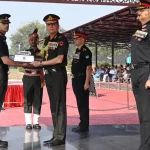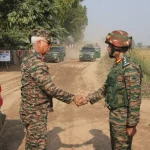Senior Indian Army officials have cautioned that maintaining a “high alert” along the Line of Actual Control (LAC) remains essential, even as India and China move towards a potential de-escalation in eastern Ladakh.
The officers highlighted that while Beijing has agreed to discussions on the “principles and modalities” of drawdown during Chinese foreign minister Wang Yi’s visit this week, the People’s Liberation Army (PLA) has already created strong infrastructure that allows its troops to quickly reoccupy forward posts.
“China has built roads, bridges, tunnels, and permanent habitats across the LAC from Ladakh to Arunachal Pradesh. Their forces can pull back 100–150 km and still return to forward positions within hours. Our mobilisation capability does not match that,” a senior Army officer told Times of India.
Although both sides have pulled back from flashpoints like Depsang and Demchok since October, heavy forward deployments continue. Several PLA brigades—each comprising 4,500–5,000 troops—remain stationed near the frontier with tanks, artillery, armoured vehicles, and missile systems.
The immediate priority for India remains the restoration of its patrolling rights in “no-patrol buffer zones” created during earlier disengagement rounds up to September 2022. These areas, ranging from 3 km to 10 km across Galwan, Pangong Tso’s north bank, Kailash Range, and parts of Gogra-Hot Springs, were meant to be temporary but remain unresolved.
Meanwhile, both countries have agreed to establish new “general-level mechanisms” in the eastern and middle sectors—covering Arunachal Pradesh, Sikkim, Uttarakhand, and Himachal Pradesh—supplementing ongoing talks between India’s 14 Corps and China’s South Xinjiang Military District in Ladakh.
Army officials reiterated that despite diplomatic engagement, India cannot afford to lower its guard. “There is no disruption in coordinated patrolling at disengaged sites,” an officer said, “but the PLA’s infrastructure and preparedness mean vigilance is non-negotiable.”













